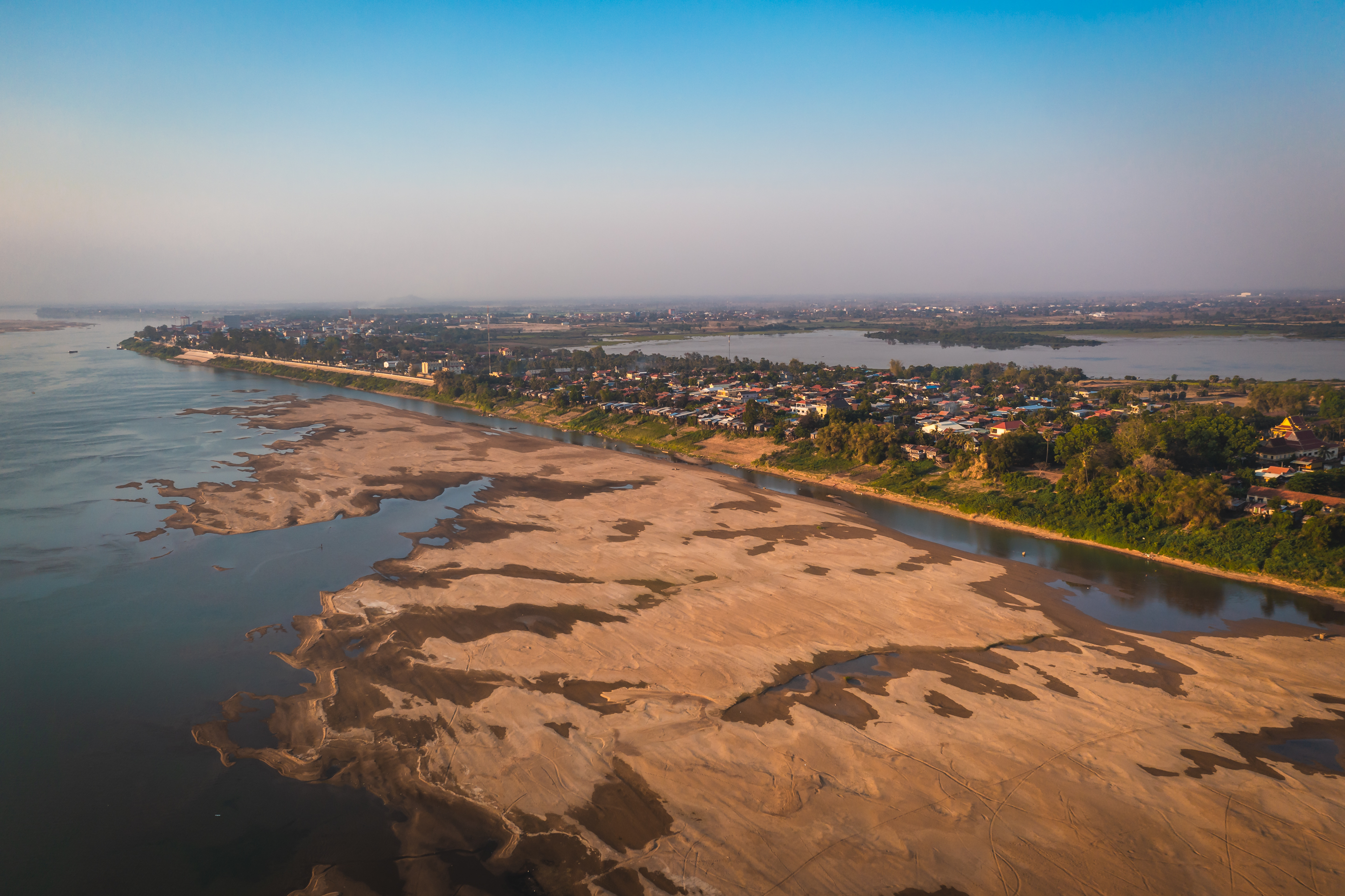Low dry season flows in Mekong drive down Cambodia’s Tonle Sap, countries urged to improve basin-wide management

The Mekong River Commission (MRC) Secretariat has urged the wider exchange of data and information as part of recommendations to improve water resource management in the Lower Mekong Basin, in a bulletin released today
The Mekong River Commission (MRC) Secretariat has urged the wider exchange of data and information as part of recommendations to improve water resource management in the Lower Mekong Basin, in a bulletin released today.
The 18-page Situation Report encourages MRC Member Countries and Dialogue Partners to share operational data to garner a deeper understanding of recent changes in Mekong mainstream flow patterns and to address any potential impacts on the riverine communities.
“For the sake of better management of the basin and of good faith cooperation, both Member Countries and China should notify any planned major changes in the operation of hydropower projects and share that information with the MRC Secretariat. This is important where such operations may result in abnormal rises and falls in water levels,” says Dr An Pich Hatda, MRC Secretariat Chief Executive Officer.
He also invites other platforms monitoring Mekong River levels to coordinate and verify data with the MRC Secretariat to ensure the public is kept adequately informed.
The Member Countries are obligated to “enable the acceptable natural reverse flow of the Tonle Sap River to take place during the wet season” and prevent human-made peak flows that what would not naturally occur during the flood season, according to the MRC Procedures for Maintenance of Flows on the Mainstream (PMFM).
The report, which evaluates hydro-meteorological conditions during the 2020–2021 dry season spanning November 2020–May 2021, showed fluctuations in water levels in the upper reaches of the Mekong mainstream in Lao PDR and Thailand, as well as low water volume stored in the Tonle Sap Lake.
Rainfall in April–May was the highest on record for these months for the last 18 years in places. This was particularly striking over the middle part of the Lower Mekong Basin areas of Thailand and northern Cambodia. But overall, river flows did not increase significantly.
Hydropower impacts
Rapid changes in water levels in the flows due to hydropower operations in the Upper Mekong continued in 2021. Such changes, the report says, may have impacted navigation, river ecosystems, and riverbank stability, although more study is needed to pinpoint the type and extent of impact.
The report notes that, as has been the case during the past few years, releases from storage dams increased dry season flows above the long-term averages for most of the dry season, with both positive and negative consequences. Increases in dry season flows could be beneficial for agricultural production and navigation and combatting seawater intrusion in the Mekong Delta.
Overall, flows in the Mekong in the first five months of 2021 were higher than the long-term average, except for December 2020 where flows in the Mekong mainstream were closer to normal. But the report notes at the start of the dry season hydropower plants were holding back or storing the first flows of the wet season. This occurred again near the start of the wet season when early rain to re-fill the reservoirs on the Lancang and LMB tributaries was held back.
Lower flows in the Mekong in the 2019 and 2020 wet seasons decreased return flows and seasonally flooded area of the Tonle Sap Lake on which much of Cambodia’s population relies for their livelihoods. This triggered adverse impacts, according to the report, on agricultural production, the ecological balance, reduced nutrient-rich sediment mobilisation, and transportation as well as decreased household fish catch in the Tonle Sap Lake area.
The report recommends a more detailed study on the pattern of water level changes using newly installed water monitoring stations at Xiengkok upstream of Chiang Saen, and Ban Pakhoung downstream of the Xayaburi dam, all in Lao PDR. It also suggests that further studies into active management of water storage in the whole basin could lead to improved operations by the riparian countries, thus reducing the potential adverse impacts on the communities.
Outlook for the 2021 wet season
Citing NOAA and the European Centre for Medium-Range Weather Forecasts, the report indicates higher than average rainfall in June when compared to the same period in 2019 and 2020.
But drier than normal conditions are expected in July and August over some parts of the basin. Cambodia, the Central Highlands of Viet Nam, and southern Lao PDR may receive less rainfall than normal in July.
Note to editors:
The MRC is an intergovernmental organisation for regional dialogue and cooperation in the Lower Mekong River Basin, established in 1995 based on the Mekong Agreement between Cambodia, Lao PDR, Thailand, and Viet Nam. The organisation serves as a regional platform for water diplomacy as well as a knowledge hub of water resources management for the sustainable development of the region.
